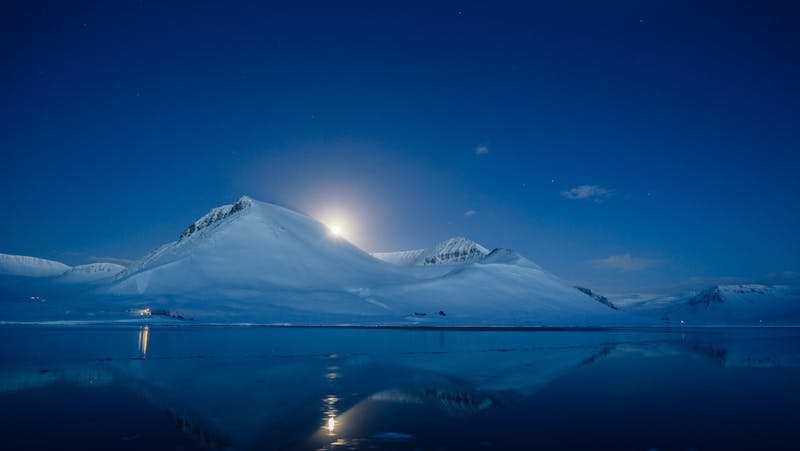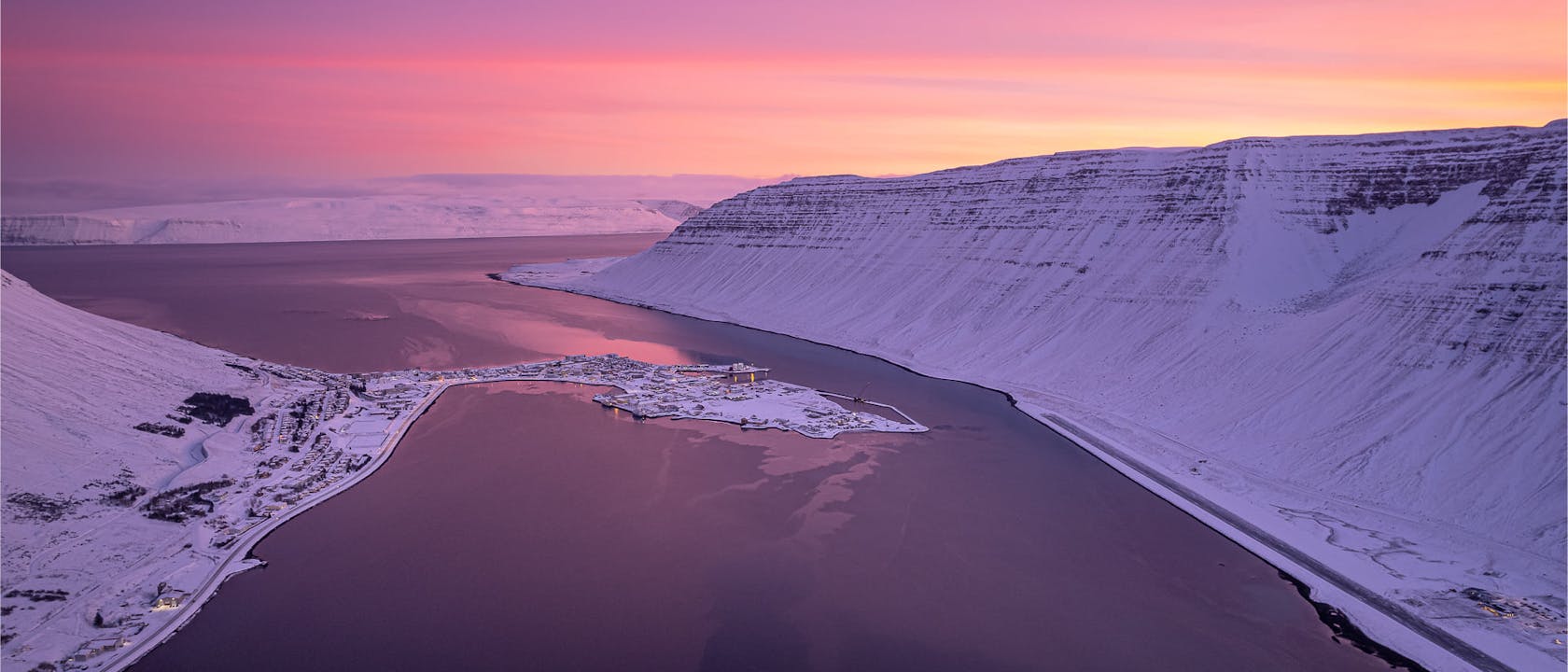Apply here.
Deadline is May 1st.
The Grímsson Fellowship program will appoint annually 2-4 fellows in order to encourage research and writing in an idyllic space close to the Arctic. The aim is to promote cooperation and knowledge as well as relations between international and Icelandic communities.
The Fellowship will be open to candidates in the fields of Climate Change, Environment, Social Sciences, Natural Sciences, Health Sciences, Oceans, Sustainability, Clean Energy, the Arctic, History, as well as Literature.

Ísafjörður
The program offers a 2-6 weeks stay in Grímshús, the House of Grímur, where President Ólafur Ragnar Grímsson was born and his family lived. President Grímsson now owns the apartment which will house the fellows and has made it available for the program. In addition to living in this splendid old house which offers excellent working space, the fellows can have access to the Town Library in the magnificent old hospital, a one-minute walk from the House of Grímur, or in the facilities of the University Center of the Westfjords, located further downtown. Airfare for the fellow from Icelandair's European and American destinations will be covered as well as 50 USD dollars per day stipend as a contribution towards living expenses.
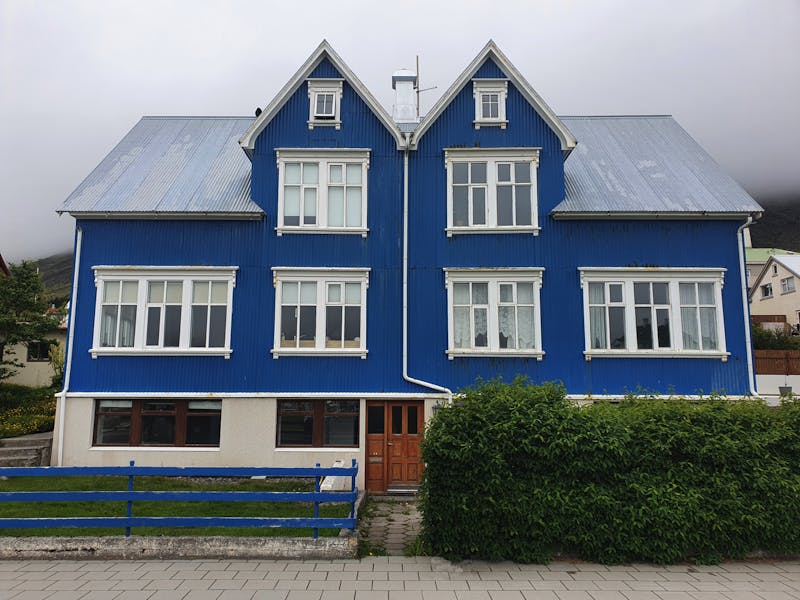
The House of Grímur, Túngata 3
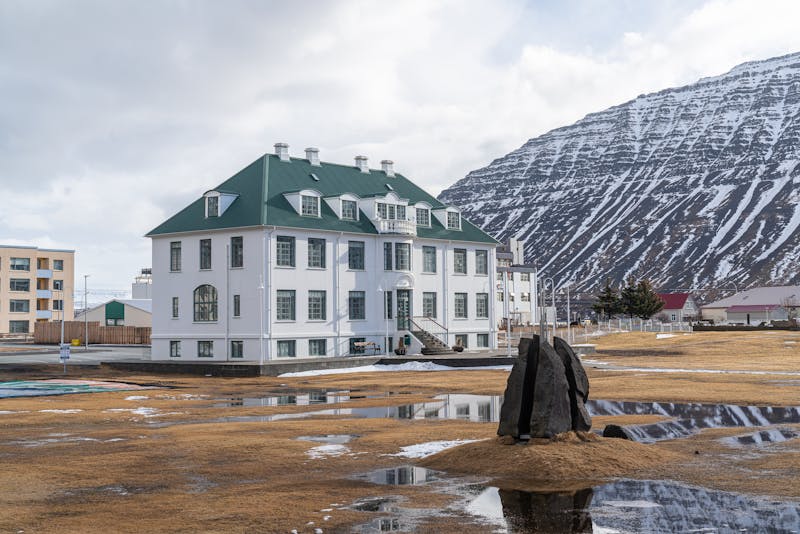
Town Library, the old hospital
No obligations are attached to the Fellowship other than participating in a seminar or a dialogue or giving a lecture either at the University Center of the Westfjords or with one of the main universities in Iceland.
The Fellowship was launched in November 2022 at a conference in Ísafjörður opened by Katrín Jakobsdóttir, the Prime Minister of Iceland. Among other speakers were Ólafur Ragnar Grímsson, former President of Iceland, Jón Atli Benediktsson, Rector of the University of Iceland; Ragnhildur Helgadóttir, Rector of Reykjavík University; Eyjólfur Guðmundsson, Rector of the University of Akureyri; Peter Weiss, Director at the University Center of the Westfjords along with a number of scholars and scientists from the Westfjords region.
The international program is initiated by and within the auspices of the new Ólafur Ragnar Grímsson Center, founded in late 2021 at the instigation of the Government of Iceland to honour the international legacy of President Grímsson who is the founding father of Arctic Circle. He remains the longest-serving President of Iceland; from 1996-2016. The fellowships are based on participation by the University of Iceland, University of Akureyri, Reykjavík University, the University Center of the Westfjords and the biotechnology company Kerecis, which originates in Ísafjörður. The office of the Fellowship is in the Arctic Circle Secretariat.
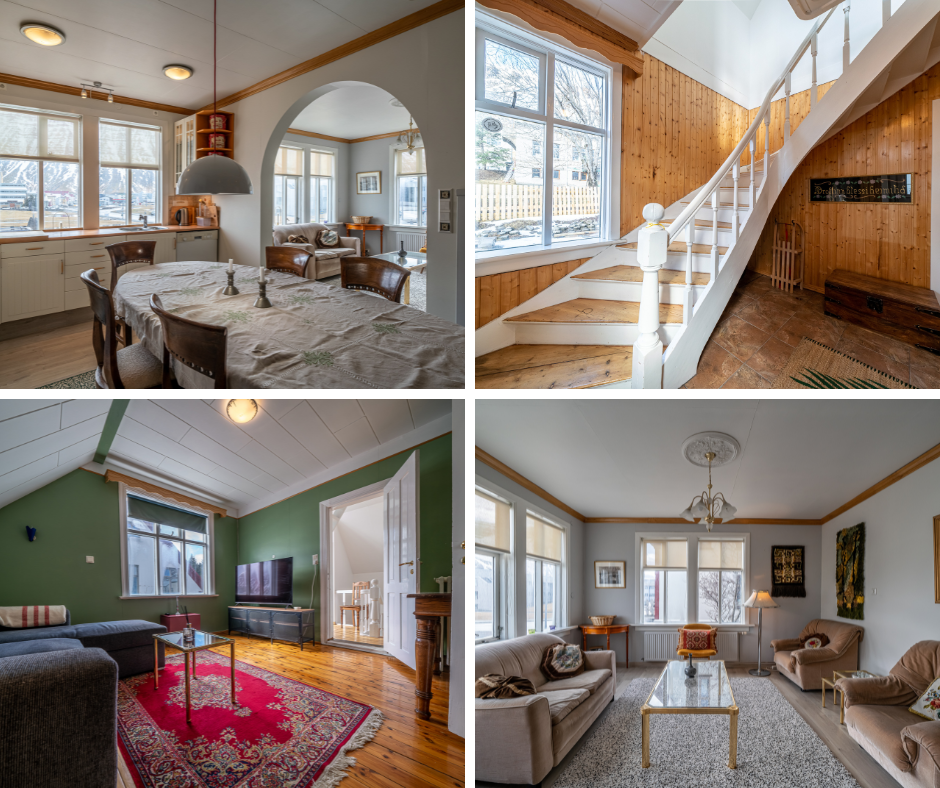
The House of Grímur
The House of Grímur is located in Túngata 3 and was initially built by Norwegians in the first years of the 20th century. It was moved to Ísafjörður in 1930 by Grímur Kristgeirsson, father of Ólafur Ragnar Grímsson. The House was President Grímsson's childhood home until he moved to Reykjavík as a young man. The House became known locally as Grímshús, The House of Grímur, named after President Grímsson's father who was a prominent figure in the town and sat on the town council for almost 20 years. Together with the other houses Túngata constitutes a significant landmark, close to both the Town Library as well as the old town center.
The Grímsson Fellows accommodation is in the southern part of the building, which comprises two floors and an attic, altogether about 140 m2. The lower floor has a spacious kitchen, a bathroom and a living room which also could provide a working space. On the walls are embroideries by President Grímsson's mother. The upper floor consists of a master bedroom and a second bedroom for 2-3 people, as well as a seating area that could also serve as a working space. A toilet is also on the upper floor. The attic is spacious and an ideal place for children to sleep or play. Since the apartment is spacious, fellows could bring their spouses or partners and/or 2-3 children.
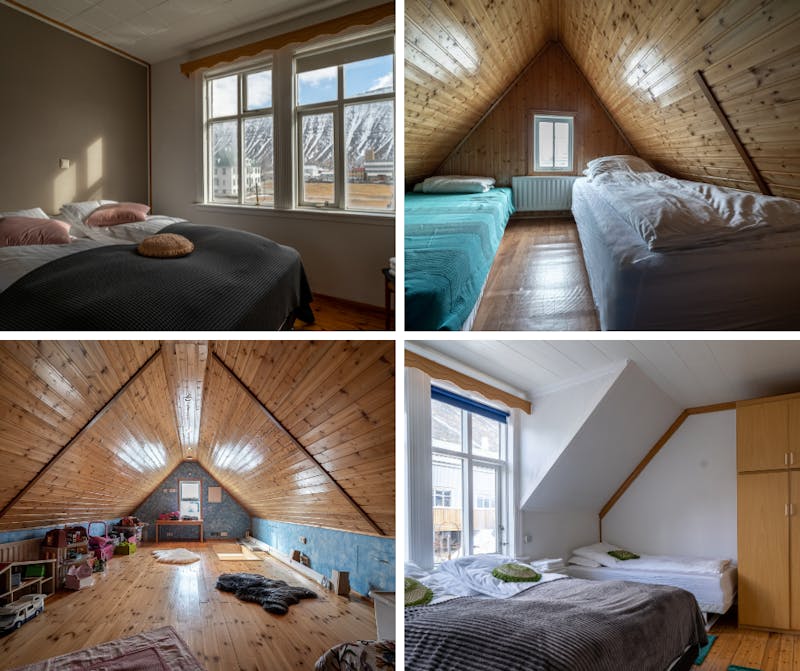
Ísafjörður
Ísafjörður is the largest town in the Western Fjords, historic, charming and surrounded by a magnificent landscape. Today close to 5000 people live in the town and neighbouring villages. The first settlers in Ísafjörður arrived from Norway in the 9th century and in the 16th century it became a trading post for foreign merchants, mainly Danish. The Danish heritage is reflected in the oldest collection of timber houses in Iceland located in Ísafjörður's Neðstikaupstaður, the old quarter close to the harbour. The neighbouring region has a famous and splendid mountainous landscape, ideal for hikes and other adventures, with only 45 minute's drive to Dynjandi, one of the most magnificent waterfalls in Iceland.
In addition to the fishing industry, Ísafjörður has seen the meteoric rise of the young biotech company Kerecis, which turns cod skin into dressing for burn wounds and other medical products. The Kerecis products are widely used in the United States and the company has its American headquarters in Washington DC. Ísafjörður is also well-known for its strong cultural legacy, especially in music and literature as well as a robust political tradition from the era of the independence struggle to modern times.
In the Ísafjörður municipality, the town and the neighbouring villages, there are museums, churches, swimming pools, restaurants, outdoor artworks and monuments, music schools, art galleries and more. Restaurants in Ísafjörður such as Tjöruhúsið, Edinborg restaurant and Við Pollinn are popular and provide an excellent selection of Scandinavian and European cuisine. Tjöruhúsið is renowned for its fresh seafood dishes.
Kayaking is common during summer time while downhill skiing and cross-country skiing are popular during winter. In the town buses and rental cars are available.
For more information visit the website of Ísafjörður.
Fore more information about the University Centre of the Westfjords visit UW.
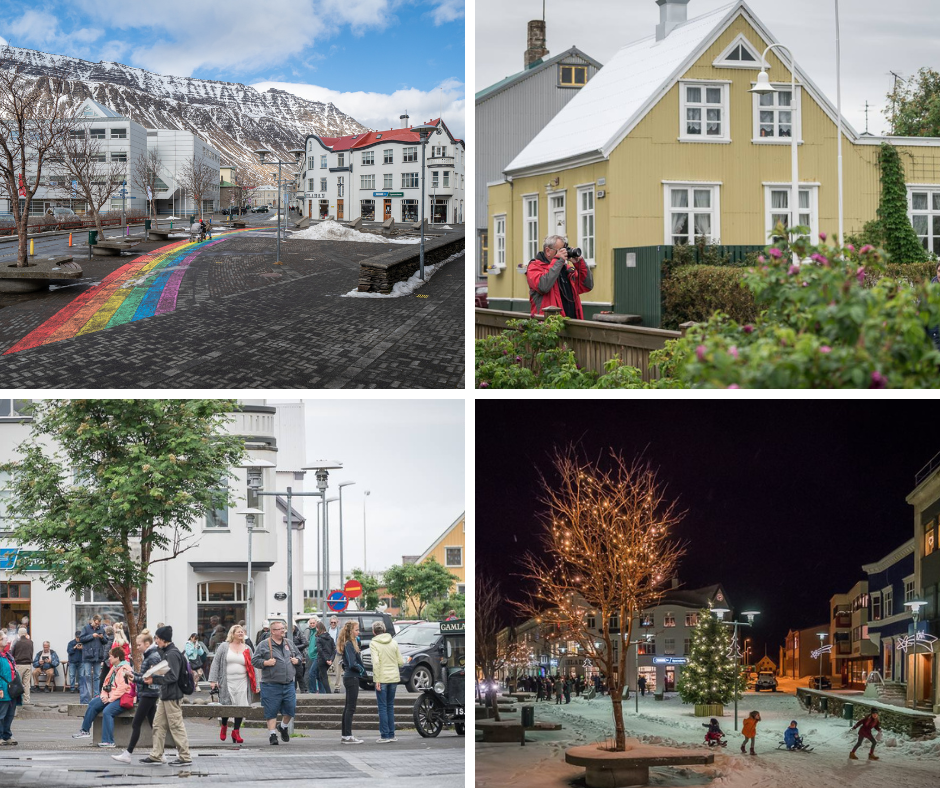
Ísafjörður
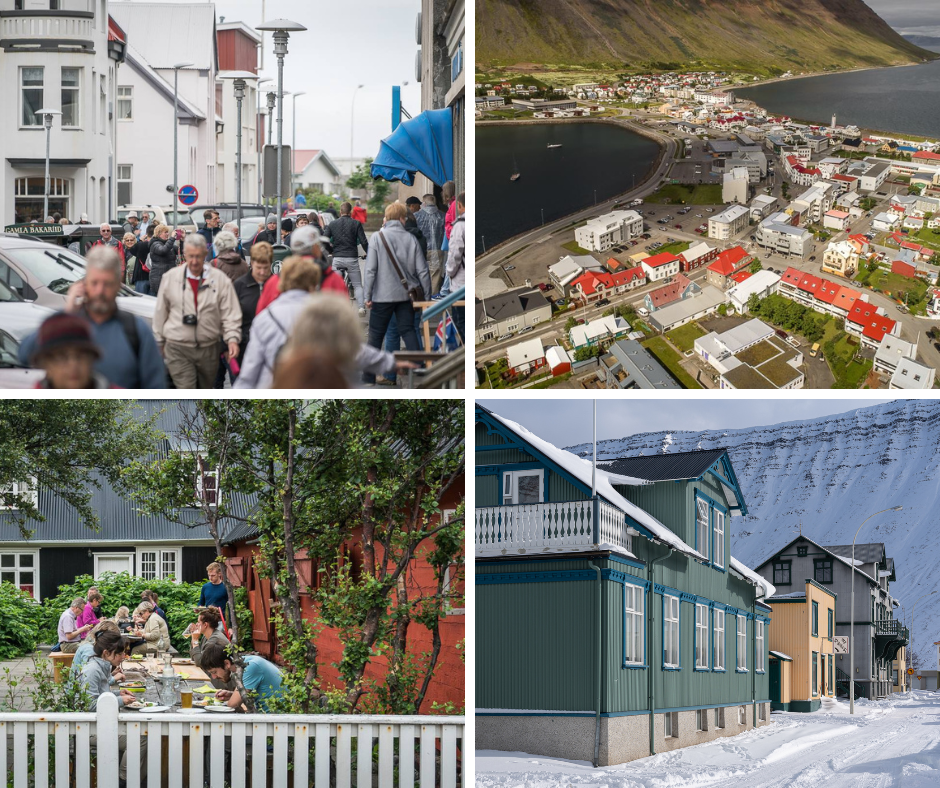
Ísafjörður
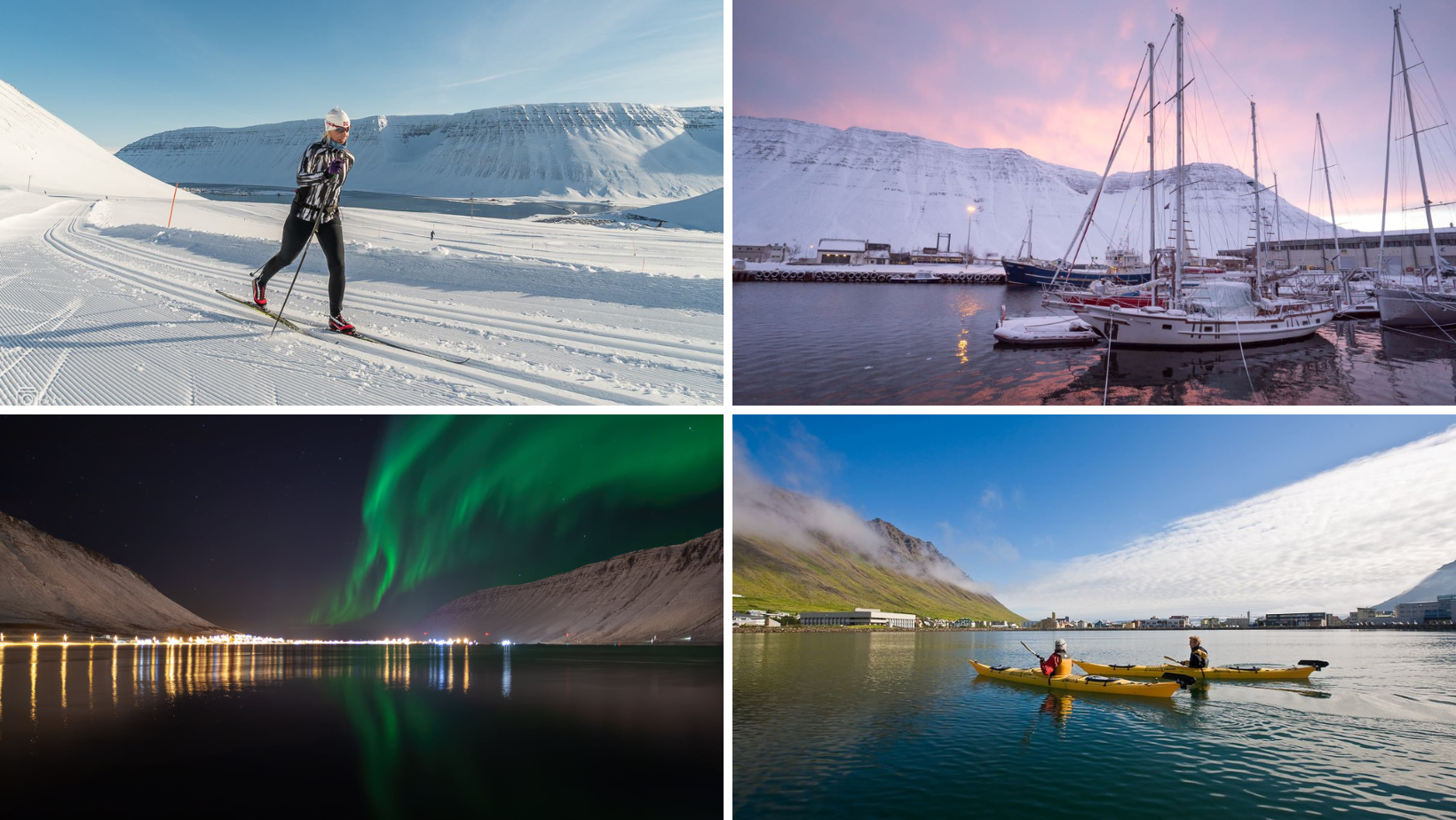
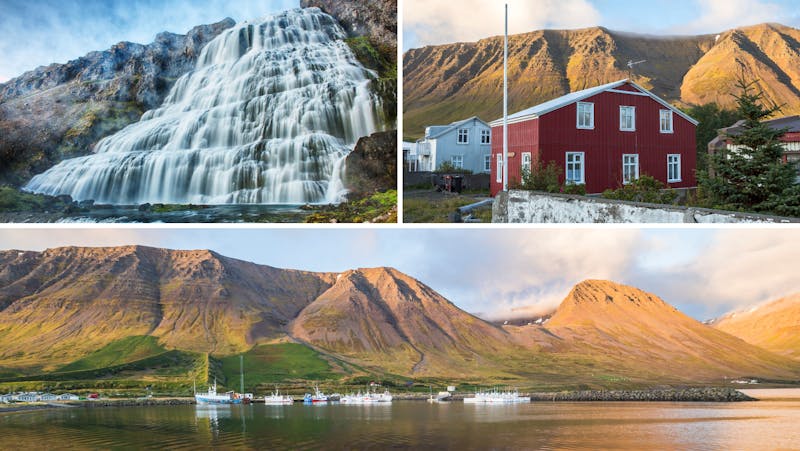
Westfjords Region
A part of the municipality of the town of Ísafjörður are the villages of Þingeyri, Flateyri and Suðureyri. The town of Bolungarvík is also nearby.
The fellows are highly encouraged to visit the Westfjords region and make the most of their stay. Enthralling sceneries of seaside villages and mountains, excellent food and photo stops, splendid hikes in different fjords, along with various campsites and homey cafés. As an example, Þingeyri is known for its oldest functioning mechanic workshop in Iceland from 1913 along with one of Iceland's most scenic golf courses. See more here.
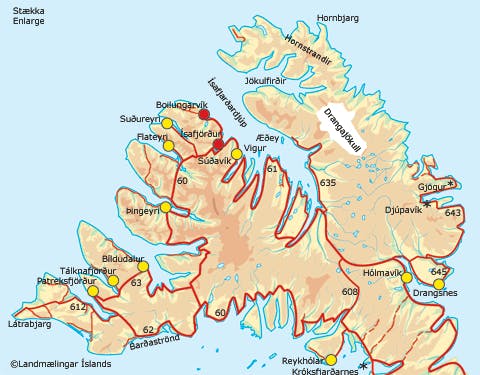
Flateyri is another scenic village around 20 minutes drive from Ísafjörður. It has been an important trading post in Iceland since 1792 and became a base for shark hunting in the 19th century. With a great swimming pool and wonderful hot pots, Flateyri is a popular traveling destination in the Westfjords. Just across the fjord, in Önundarfjörður there is a white sandy beach, the site of an annual sand castle competition that draws hundreds of participants each year, both children and adults.
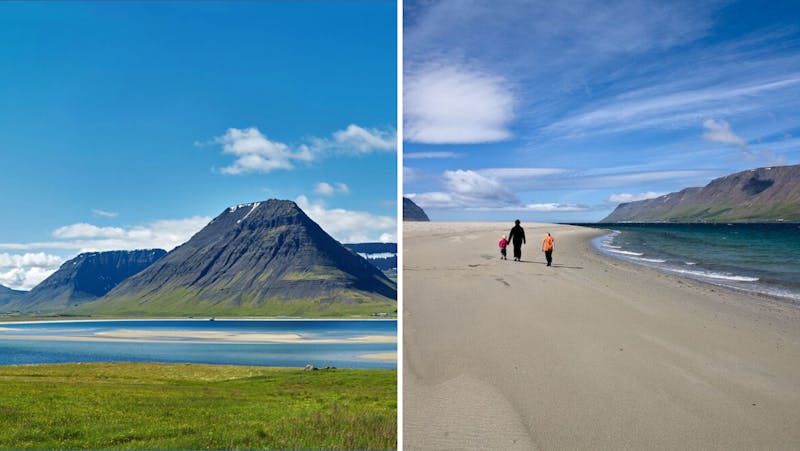
Another paradise stop is the Island of Vigur, sometimes referred to as the Puffin Island. A wonderful opportunity to get close to rare Arctic birdlife and only a half an hour's boat ride from Ísafjörður.
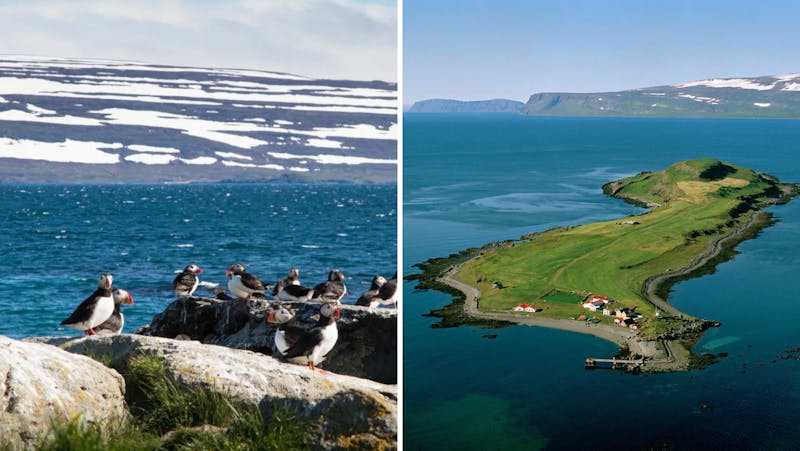
How to Apply
Applications for the period fall/winter 2025 to 2026 are now open.
You can apply here. Deadline is May 1st.
The selection committee appointed by the Ólafur Ragnar Grímsson Centre: Matthildur María Rafnsdóttir, Arctic Circle; Dr. Peter Weiss, University Center of Westfjords and Dr. Guðbjörg Ásta Ólafsdóttir on behalf of the University of Iceland, the University of Reykjavík and the University of Akureyri.
General management of the program is in the hands of the Arctic Circle Secretariat.
For further information contact: secretariat@arcticcircle.org
Chosen Fellows:
2023
- Seira Duncan from the UK. Project: “The psychological well-being among Indigenous communities in the Arctic vis-a-vis climate change.”
- Dina Brode-Roger from the USA/France. Project: “Impacts of embodied and mediated understandings of an environment on the perception of risks in an Arctic context: comparative case studies of Longyearbyen, Svalbard and Isfjördur, Iceland.”
2024
- Allison Chandler from Canada. Project: “Universities as a tool of development in northern and Arctic regions.”
- Nishtha Tewari from India. Project: “Geographies of Unmapped Illness: Health, Households, and Mobilities in the Indian Himalayas.”
- Gabriel N. Gee from France. Project: “Icelandic maritime histories through the specific lens of Ísafjörður.”
- Elisa Debora and Benjamin Hofmann from Switzerland. Project: “Science for Sustainable Anthropocene Governance: A Transdisciplinary Visual Exploration in the Icelandic Westfjords.”
- Luke Earl Holman from the UK. Project: “An EU funded research project that aims to understand the ways in which humans have affected our oceans and to understand pre-human marine biodiversity.”
2025
- Anna J. Davis from the USA. Project: “Research project on being an Arctic state.”
- Patrick Maher from Canada. Project: “Research into Ísafjörður's community interactions with the masses of cruise tourism and the management of protected areas, in danger of being loved to death.”
